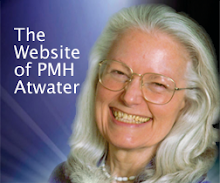Out-of-Body Experiences
Science Journal, August 24, 2007, reports on the work of several neuro- scientists, who have been able under laboratory conditions to induce the sensation in individuals of being apart from or out of their bodies.
But, is what was induced really an out-of-body experience?
According to Matthew Botvinick, assistant professor of neuroscience at Princeton University, who was not part of the experiments, “the sense of having a body, of being in a bodily self” is actually constructed from multiple sensory streams. These sensory streams include vision, touch, balance, and the sense of where one’s body is positioned in space. If anything happens to throw these streams off, the sense of being embodied can alter or shift.
With this as a given, two men, working separately and in different places, attempted to trick the brain of volunteers into believing their body was located somewhere else rather than where it actually was.
Henrik Ehrsson, now based at the Karolinska Institute Stockholm, Sweden, but then working at University College London, had participants wear goggles and altered images for each eye, as well as had certain touch techniques applied. The volunteers reported seeing 3-D images of their own back and feeling as if they were standing where cameras had been placed, watching a body that belonged to someone else.
Olaf Blanke of Ecole Polytechique Federale de Lausanne, Switzerland blindfolded volunteers and guided them backwards. When asked to return to their original position, the volunteers were confused and overshot the start position in the direction of where they felt their virtual body was, not their physical one.
In summary, both neuroscientists noted that confusion between the senses of each participant was the key mechanism that explains out-of-body experiences. “This is essentially a means of projecting yourself, a form of teleportation,” said Dr. Ehrsson.
And that is indeed the key mechanism – to producing a doppelganger, not what most people mean when they refer to an out-of-body experience.
Doppelganger, or double-walker, is the term used to describe the phenomenon of where individuals see a ghostly double of themselves, or feel their own counterpart at a distance from themselves. The work of these two scientists lends new credence as to how such a doppelganger could occur and, moreover, how that phenomenon, if controlled, could become an advantage with video games, military training, and surgeons performing remote operations on a patient. Their findings could also explain the partial or incomplete experiences people have of being out of their body during various types of injury, shock, or paralysis.
But their findings neither explain nor apply to the complex, clear, and fully coherent and consciously involved out-of-body experiences people often have during near-death states, intense meditation, or spiritual transformations.
A true, real out-of-body experience, especially if an aspect or component of the near-death phenomenon, typically involves extensive movement and interaction not only within the environment of the individual, but in novel, different, or far-flung environments unknown to the individual that are explored and investigated at length. When these individuals return to their bodies, they are able to recount in detail what they observed, heard, touched, sensed, smelled, and witnessed. Third-party verification of such details is commonplace.
People can be trained in how have out-of-body experiences – via certain relaxation and visualization techniques, along with the discipline of intent. Such training sessions emphasize cross-checking whatever was experienced or witnessed to make certain of accuracy, as well as third-party verification.
True out-of-body experiences do not match the results of the experiments conducted by the two neuroscientists reported on in Science Journal. What they did find, though, is quite intriguing and may indeed explain the phenomenon of the double-walker counterpart people have claimed that they had - since the earliest of times.
###
P. M. H. Atwater, L.H.D. is one of the original researchers in the field of near-death studies, having begun her work in 1978. Her latest book, “The Big Book of Near-Death Experiences,” due out this October, was featured in the online version of Newsweek Magazine’s article “Back from the Dead.” Ref: www.pmhatwater.com.
Labels: OBE, Out-of-Body Experiences

